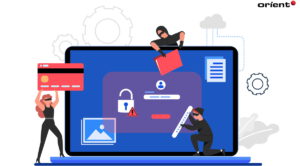What is Cloud Exploitation and How to Avoid It
Cloud Exploitation and How to Avoid It
Cloud exploitation refers to the use of malicious software to exploit cloud-based systems. It is one of the most common forms of cyberattacks that organizations face, and it can result in a loss of data, slowed operations and other security risks. Knowing what to look out for and how to avoid it can help businesses safeguard their sensitive information, build customer and client trust, prevent a public relations disaster and avoid non-compliance penalties.
As organizations move to the cloud in search of scalability, efficiency and security, threat actors have taken notice. These attackers are increasingly targeting these new architectures in order to steal valuable data or hijack cloud computing infrastructure. In fact, the recent phishing attack that affected the AIS cellular network, which resulted in the accidental exposure of 8 billion internet activity records, was a case of cloud exploitation.
A recent study by security company Check Point revealed that attacks against cloud-based networks are growing in frequency, as well as severity. In its survey of security incidents that occurred in 2022, the infosec firm found that 48 percent of attacks were targeted against cloud-based systems. This is because these installations are accessible to hackers from the public Internet and outside of a business’s traditional network perimeter. Attackers can easily gain unauthorized access to these systems through misconfiguration or stolen credentials.

What is Cloud Exploitation and How to Avoid It
The good news is that cyberattacks against cloud-based systems tend to have a higher impact than those against on-premises networks. According to Check Point, this is due both to the greater value of the data stored in a cloud system and to the fact that most of these systems are not regularly patched. For instance, the Log4j flaw that was recently exploited by state-sponsored attackers infiltrated unpatched servers at a cloud-based US federal agency and installed malware on them.
Understanding Cloud Exploitation and its impact
To get started, criminals typically opportunistically scan for known remote code execution (RCE) vulnerabilities in server software, and then leverage the compromised system to spread to more vulnerable machines within a network or across multiple cloud providers. From there, the bad guys can elevate privileges, hijack support accounts and use lateral movement to infiltrate and manipulate even more systems.
In more sophisticated cases, attackers can target main cloud administrator accounts, bypassing the need for reconnaissance and privilege escalation. Once they have this type of access, they can access, control and manipulate all the resources of a cloud-based enterprise. This can lead to a variety of problems, including the theft or deletion of sensitive data, and it also opens the door for more malicious activities, such as distributed denial-of-service (DDoS) attacks, which flood a target with traffic until it crashes.
Best practices to Prevent Cloud Exploitation
To avoid these kinds of attacks, companies should employ the latest in cloud exploitation technologies. Using these tools can help protect against these types of threats by blocking and blocking suspicious web traffic and protecting against the exploitation of cloud infrastructure components and applications. In addition, they should deploy cloud threat intelligence solutions that are able to identify these malicious activities.